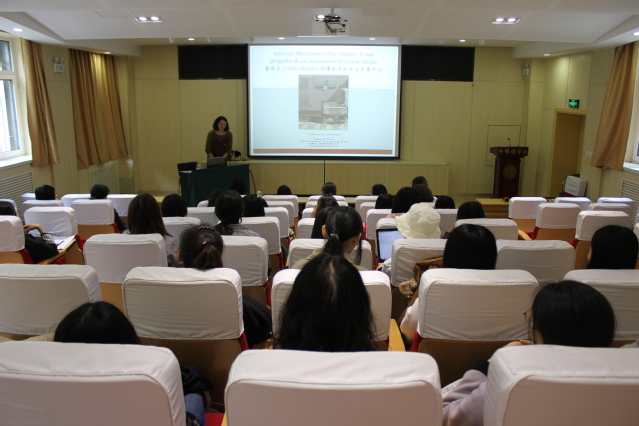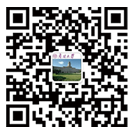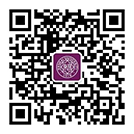
On the morning of April 23rd, Anna Di Toro, an associate professor from Università per Stranieri di Siena, gave a lecture themed with “The Italian Sinologist Montucci in the 19th Century and His Chinese Dictionary Program” in the College of Foreign Languages. The lecture The lecture presided over by Ms Yang Lin, associate professor from the Italian Department, has attracted all the teachers and students from the Italian Department.
At the very beginning of the lecture, Anna Di Toro used the Western painting on the presentation cover to illustrate what China was like in the Europeans’ eyes then. He developed his lecture from the history of Italian sinology in the 17th and 18th centuries, and further explained what was sinology, why Italian sinology prospered at that time, and what contributions the missionaries in China have made to the cultural exchanges between China and the West. He then pointed out that, in the portraits of Matteo Ricci and Xu Guangqi, it was because the painter had never seen the Asians and didn’t know what they looked like at all that Xu was painted to have a Mediterranean appearance. He used this example to prove that communication among countries was of great necessity and significance.
Then, Anna Di Toro introduced Montucci’s life experience and personal character. Montucci, a remarkable Italian sinologist, was born in 1762 in Siena, a city in the center of Italy. He studied both Law and English when in Università degli Studi di Siena. Acquainted with some clergy in China, he began to learn Chinese by himself. He even collected a lot of information about China through the books purchased at his own expense. Montucci had always wished to compile the first Chinese dictionary and have it published in Europe. In the lecture, Anna Di Toro introduced the historical background in which the Chinese Dictionary Program arose, and then compared European lexicology with Chinese lexicology in terms of their own characteristics. In contrast, the Chinese dictionary appeared much earlier and was monolingual. but in the European world, bilingual dictionaries appeared earlier than monolingual ones and there was even no Chinese dictionary in the early 19th century. Anna Di Toro shared Montucci’s collection of Chinese books in terms of their scientific nature with the audience. He said that, of all the characteristics of dictionaries, Montucci was most concerned about their practicality.
As the lecture was coming to the end, Anna Di Toro answered all the questions put forward by the audience, like what type of a man Montucci was, what kind of life Montucci was leading, what difficulties he had met in learning Chinese. He even offered some suggestions on learning Italian and literature for the students.



